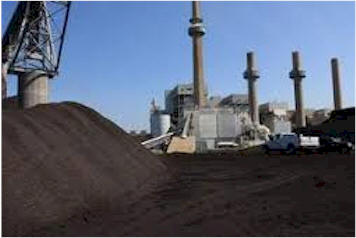 New Low-cost Auto-thermal Process for Torrefaction of Wood & other Biomass |
|
Biomass is biological material from living or recently living organisms, and represents the world’s largest renewable resource. Plant matter such as trees, branches and stumps can be broken up into wood chips and pellets that can then be used to generate electricity or produce heat. Torrefaction is a thermochemical process that reduces the moisture content of wood biomass and increases its energy density, transforming it into a charred material resembling charcoal. Through this process, volatiles and biopolymers are removed from the wood, along with the moisture. All that remains of the original wood is a smaller, blackened solid that can be made into dense pellets of bio-coal. Torrefaction can reduce the mass of wood by up to 30% (dry mass basis), resulting in a denser, higher-valued product that can be transported more economically than wood chips. With Global NRG’s torrefaction equipment, wood retains up to 90% of its energy value. This energy-dense end-product can be used as a replacement for coal or co-fired with coal in electric power plants. This man- made coal can provide energy rates of up to 23.7 million BTU per ton. Natural coal generally provides 28.4 million BTU per ton. |
| The Torrefaction Process |
|
Torrefied wood is made by mild pyrolysis of wood biomass within a torrefaction reactor, at temperatures of 500-600° F (260-320° C). This removes water and low boiling-point organics and partially breaks down cellulose, hemicellulose and lignin. Reaction gases can be captured and used as a supplemental fuel source for the process. Torrefaction achieves a stable moisture content of 0-3%, reduction of mass by 30%, retention of 90% of original energy content and removal of smoke producing agents. Torrefied wood has a heating value of approximately 10,000 BTU per pound (23 MJ/kg). During heating, biomass releases volatile gases. If not completely combusted, these gases can be carcinogenic, just like smoke from forest fires. During the Global NRG torrefaction process, these gases are captured and completely combusted, and the heat is used to dry the incoming biomass material. After combustion, the exhaust gases are then non-polluting and harmless to human health.
The main form of processed biomass in use today is pelletized dry sawdust. These wood pellets represent a relatively clean fuel that is internationally available, easy to handle and has a relatively low transport cost. Wood pellets work well in coal-fired plants and are regarded as a proven technology. However, standard wood pellets have their drawbacks. Pellets need dedicated silo storage to avoid degradation, and co-firing with coal may influence primary air requirements, combustion behavior, heat transfer, boiler efficiency, by-products and emissions. These various issues mean that wood pellets are not a commodity fuel that can be blended with coal in whatever proportions are desired. Torrefaction creates a biomass product with superior handling and co-firing capabilities than standard wood pellets. Due to its hydrophobic nature, torrefied wood pellets can be stored in the open air, which eliminates the need for silos. Torrefied wood represents a true commodity fuel. Businesses that rely on coal can benefit by replacing some of that coal with the renewable energy of torrefied wood. Regions with the highest coal use have the greatest opportunity to implement positive change by substituting torrefied wood for some of their coal.
Characteristics of torrefied wood: • High energy content (approximately 10,000 BTU/lb or 23 MJ/kg) • Hydrophobic (repels water) to prevent rot. Torrefied wood can be stockpiled outside like coal. • Friable (can be crumbled or pulverized) • Ability to be pelletized or briquetted
|
